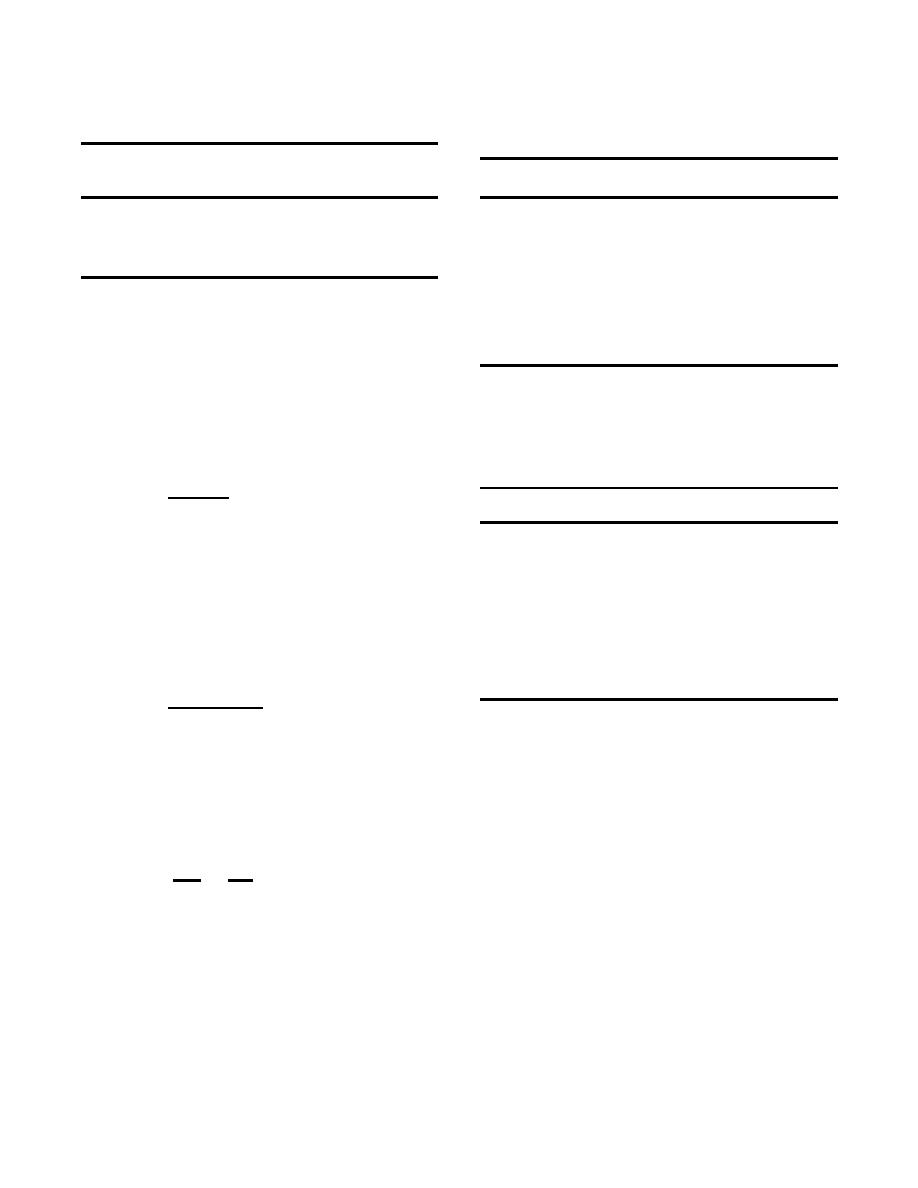
TM 5-811-7
Table 2-4.
Weights and dimensions of selected circular high-
Table 2-5.
Shape functions (K) for impressed current cathodic
silicon chromium-bearing cast iron anodes
protection anodes where L is effective anode length
and d is anode/backfill diameter.
Anode
Anode
Anode
Package
weight
dimensions
surface
area
L/d
K
L/d
K
(lb)
(in.)
size (in.)
(sq ft)
5
0.0140
20
0.0213
6
0.0150
25
0.0224
12
1 x 60
1.4
10 x 84
7
0.0158
30
0.0234
44
2 x 60
2.6
10 x 84
8
0.0165
35
0.0242
60
2 x 60
2.8
10 x 84
9
0.0171
40
0.0249
110
3 x 60
4.0
10 x 84
10
0.0177
45
0.0255
12
0.0186
.50
0.0261
Reproduced from Harco Corporation, Catalog of Cathodic Protection
14
0.0194
55
0.0266
Materials, 1971. Used with permission.
16
0.0201
60
0.0270
(4) Calculate number of anodes needed to
28
0.0207
satisfy manufactuere's current density limitations.
Impressed current anodes are supplied with a
Reproduced from W.T. Bryan, Designing Impressed Current
recommended maximum current density. Higher
Cathodic Protection Systems With Durco Anodes, The Duriron
Company, 1970. Used with permission.
current densities will reduce anode life. To deter-
mine the number of anodes needed to meet the
Table 2-6. Anode paralleling factors (F) for various numbers of
current density limitations, use equation 2-9:
anodes (N) installed in parallel
I
N'
,
(eq 2-9)
N
P
N
P
(A1 (I1)
where N is number of anodes required, I is total
2
0.00261
14
0.00168
protection current in milliamperes, A1 is anode sur-
3
0.00289
16
0.00155
4
0.00283
18
0.00145
face area in square feet per anode, and I1 is recom-
5
0.00268
20
0.00135
mended maximum current density output in milli-
6
0.00252
22
0.00128
amperes.
7
0.00237
24
0.00121
(5) Calculate number of anodes needed to
8
0.00224
26
0.00114
meet design life requirement. Equation 2-10 is used
9
0.00212
28
0.00109
to find the number of anodes:
10
0.00201
30
0.00104
12
0.00182
(L) (I)
N'
,
(eq 2-10)
(1000) (W).
Reproduced from W.T. Bryan, Designing Impressed Current
Cathodic Protection Systems With Durco Anodes, The Duriron
where N is number of anodes, L is life in years, and
Company, 1970. Used with permission.
W is weight of one anode in pounds.
(7) Select number of anodes to be used. The
(6) Calculate number of anodes needed to
highest number calculated by equation 2-9,2-10, or
meet maximum anode groundbed resistance re-
2-11 will be the number of anodes used.
quirements. Equation 2-11 is used to calculate the
(8) Select area for placement of anode bed.
number of anodes required:
The area with the lowest soil resistivity will be
DK
DP
chosen to minimize anode-to-electrolyte resistance.
Ra '
'
,
(eq 2-11)
(9) Determine total circuit resistance. The
NL
S
total circuit resistance will be used to calculate the
rectifier size needed.
(a) Calculate
anode
groundbed
tivity in ohm-centimeters, K is the anode shape
resistance. Use equation 2-11.
factor from table 2-5, N is the number of anodes, L
(b) Calculate groundbed header cable
is length of the anode backfill column in feet, P is
resistance. The cable is typically supplied with a
the paralleling factor from table 2-6, and S is the
specified resistance in ohms per 100 feet. The wire
center-to-center spacing between anode backfill
resistance then is calculated from equation 2-12:
columns in feet.
2-6



 Previous Page
Previous Page
